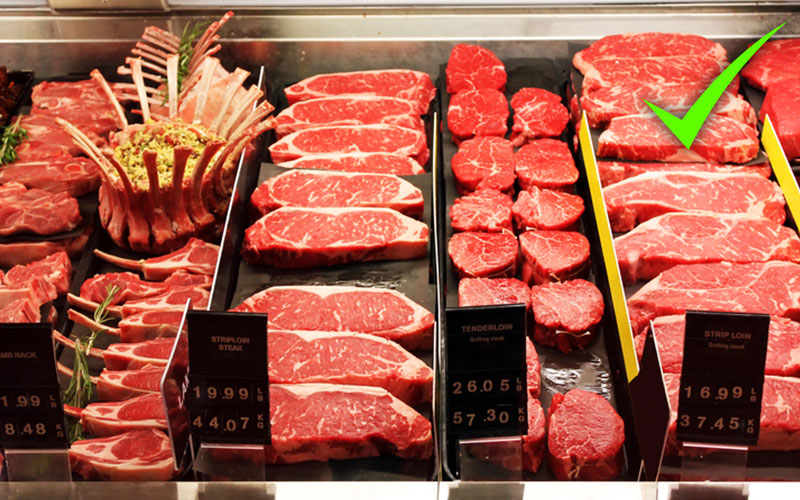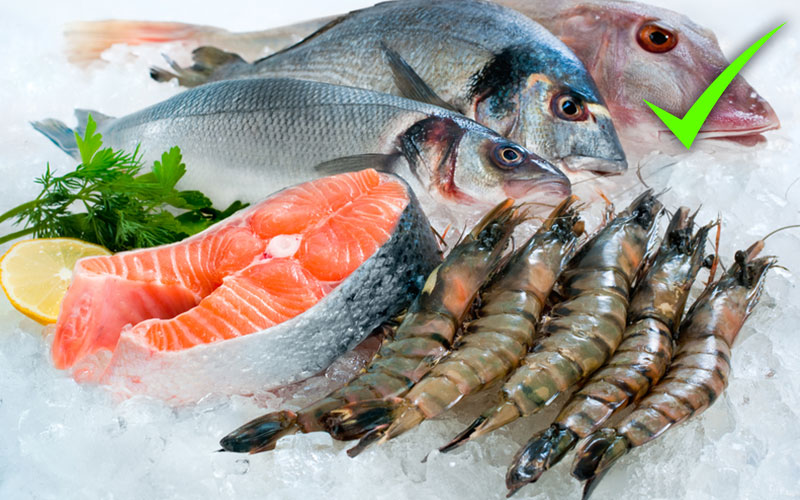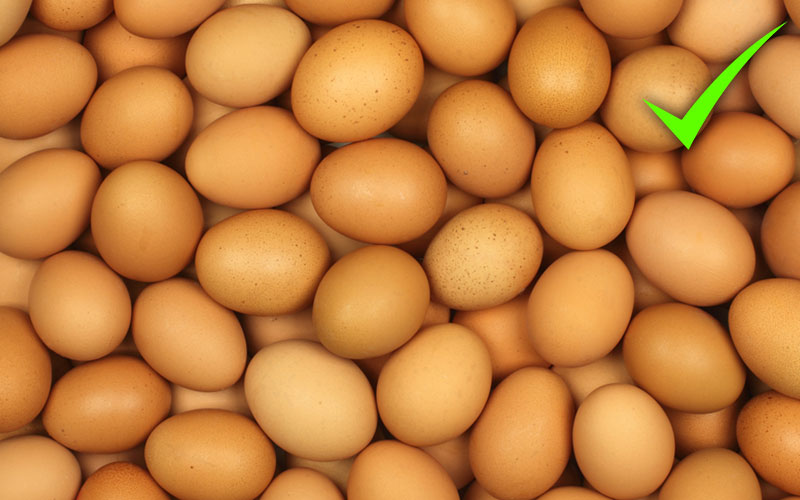Complete Keto Diet Grocery List: Foods To Eat And Avoid
Low-carb, high-fat diets have been proven time and time again to be highly effective in reducing weight and lowering the risk of certain diseases and ailments like cancer and Alzheimer’s. A ketogenic diet typically involves eating fewer than 50 grams of carbohydrates per day. The average American consumes between 230-290 carbohydrates per day. Dropping to the recommended number on the keto diet may seem like a significant change, and it is. Sticking to a keto diet is challenging at first because it requires a complete lifestyle change. Processed foods are readily available and convenient which make them perfect for today's busy lifestyles. Cutting out processed foods and switching to natural is a big step but will pay instant dividends for overall health. This list provides the five foods that you should cut immediately and the six essential foods that should be added to your daily intake.
Avoid: Processed Foods

This one may seem like a no-brainer, but processed foods are everywhere. Foods to go, frozen meals, and most chain restaurants serve up high carbohydrate, high fat, and low nutrient options. They may be convenient and make life easier, but provide little benefits for a healthy body. Processed foods are filled with chemicals, sugars, and any number of other ingredients to make them shelf stable and extra delicious. Often called the “bliss point,” processed foods are designed to make you happy and wanting more. Avoiding these foods at all costs is the first step towards a successful transition to the keto diet.
Avoid: Grains

Once processed foods are cut from the diet, the next step is to start cutting grains. This includes wheat, rice, oats, barley, corn, and quinoa. These high carbohydrate grains affect the gut microbiome which can cause bloating and irritable bowels. When part of a balanced, nutritious diet, whole grains can be beneficial, however, most people don’t live with the reality of a balanced diet leading to the keto diet craze in the first place. For the maximum benefits of the diet, cutting out grains will allow your body to restore itself and get back to normal before reintroducing the healthy grains back into the diet.
Avoid: Sugar

Sweet and delicious, sugar has taken hold of society more than any other food product in the world. Stimulating the same pleasure centers as harmful drugs, sugar has been shown to be more addictive than cocaine. Sugars are the primary source of carbohydrates in the American diet. Recent studies suggest that Americans eat, on average, 82 grams of sugar per day; that’s over nineteen teaspoons of sugar. Cutting out this addictive substance is the most challenging part of the keto lifestyle. New low-carb dieters often run into sugar withdrawal which causes symptoms like extreme cravings, headaches, shakes, and mood swings. Many people struggle with relapse but each day is a fresh start to get healthy. Quitting sugar is hard, but the results are worth the effort.
Avoid: Potatoes

The low carb diet means that a person can eat whatever vegetables that they want without fear of repercussions. While this is true for a lot of vegetables, potatoes aren’t one of them. The starch in potatoes converts into sugars as the body breaks it down. Initially low in carbs, potatoes transform into an explosion of sugar that can increase glucose in the bloodstream throwing off ketosis. The good news is that many low-carb dieters have found workarounds to their favorite potato-based foods. Mashed cauliflower can replace mashed potatoes, and zucchini fries can replace french fries.
Avoid: Diet Soda

Diet soda is a tricky subject for many keto diets. They usually don’t contain calories, sugar, and carbohydrates making them appear like the perfect drink for a low carb diet. What they do include, however, are sugar substitutes, otherwise known as sugar alcohols. Aspartame, the artificial sweetener used in many diet sodas, can trick your body into thinking you are drinking a full sugar soda. Any sugar substitute that ends in -"tol" needs to be looked at very carefully before adding to one’s diet. They are natural diuretics and trick the body into thinking they’re taking in sugar. That’s a losing recipe when trying to get healthy. If looking for a fizzy beverage, soda water is simply water with added C02, perfect for a keto diet.
Eat: Red Meats & Poultry

Keto diets are often called a meat lovers paradise. Containing zero carbohydrates and plenty of healthy fats, proteins make up the cornerstone of the diet. Meats are rich in the vitamins and minerals necessary for an efficient, functioning body. Beef, pork, and poultry contain high levels of protein, the essential building blocks of the body’s muscles. Avoiding factory processed meats and sticking to healthier grass-fed meat sources can ease some of the negative effects of eating meat. High in potassium, magnesium, zinc, and B-vitamins, grass-fed red meats and poultry will leave you feeling satisfied and full of energy.
Eat: Green Vegetables

The common saying on a keto diet is that if the vegetable is green, it’s a green light to eat as much as one likes. Green vegetables include dark, leafy greens like spinach, kale, and chard, but they also include zucchini, artichokes, broccoli, asparagus, lettuce, and Brussel sprouts to name a few. Green vegetables are low in calories and high in nutrients which makes them excellent in meals and for snacking throughout the day. Keto diets are notoriously lacking in snack options (thanks to cutting out processed foods), but green vegetables are terrific for satiating hunger. Beta-carotene and vitamin K produce enhanced mental abilities as well. Once deep into the keto diet, many people actually begin to crave these tasty veggies.
Eat: Avocado

High in healthy fat and low in carbs, avocados are a miracle food on a keto diet as they contain massive amounts of potassium, which makes the transition to a low carb diet smoother. Outside of the essential vitamins and minerals, avocados are also known to lower cholesterol and reduce the risk of heart problems. They are amazing for breakfast, lunch, dinner or snacks, and can even be turned into a low carb, keto friendly ice cream. Avocadoes have a net carbohydrate count of 2 grams per serving, with a whopping total of 7 grams of fiber, ideal for a healthy digestive system.
Eat: Seafood

Seafood is deserving of a slide all on its own since it is one of the healthiest meat options on a keto diet. Nearly carbohydrate free, fish and shellfish are nutrient rich in potassium and B-vitamins. One study even found that selenium, found in seafood, actually reversed heart issues in children who were deficient in the mineral. Oily fish like sardines, mackerel, tuna, and salmon are rich in the beneficial omega-3 fatty acids that produce DHA and EPA in the body. These fats help with memory processing, building up the immune system, and assist with mood disorders. The body isn’t capable of producing these fats naturally, so incorporating seafood is great for the keto diet and mental health.
Eat: Eggs

Choline is vital for nerve regeneration, muscle health, a working metabolism, and boosting energy levels, and eggs are an excellent source of this essential nutrient. Many people have wondered why they feel so refreshed after a hearty portion of eggs for breakfast; the answer is choline. Eggs are low in carbohydrates and offer a diverse array of preparation methods. They’re also inexpensive and loaded with protein. Egg yolks contain healthy cholesterol and fats, while the whites offer many essential vitamins and minerals like selenium, zinc, vitamin D, and B-vitamins. It is not uncommon for a low-carb diet to include eggs in almost every meal to capitalize on the health benefits of this superfood.
Eat: Butter, Cream, And Cheese

Milk itself may be off limits during a keto diet, but its many associated dairy products are not. These products are high in calcium and protein. Cheese is super delicious and nutritious, and almost all cheese is low in carbohydrates and high in healthy fats. Heavy cream is a good alternative to milk in coffee, and it can be substituted for milk in almost all recipes. Grass-fed butter is high in the fatty acid, butyrate. Butyrate is known to aid in the reduction of weight gain and dissipate hunger cravings. Linoleic acid, found in cheese, cream, and butter, has also been proven to protect the body from heart disease.
